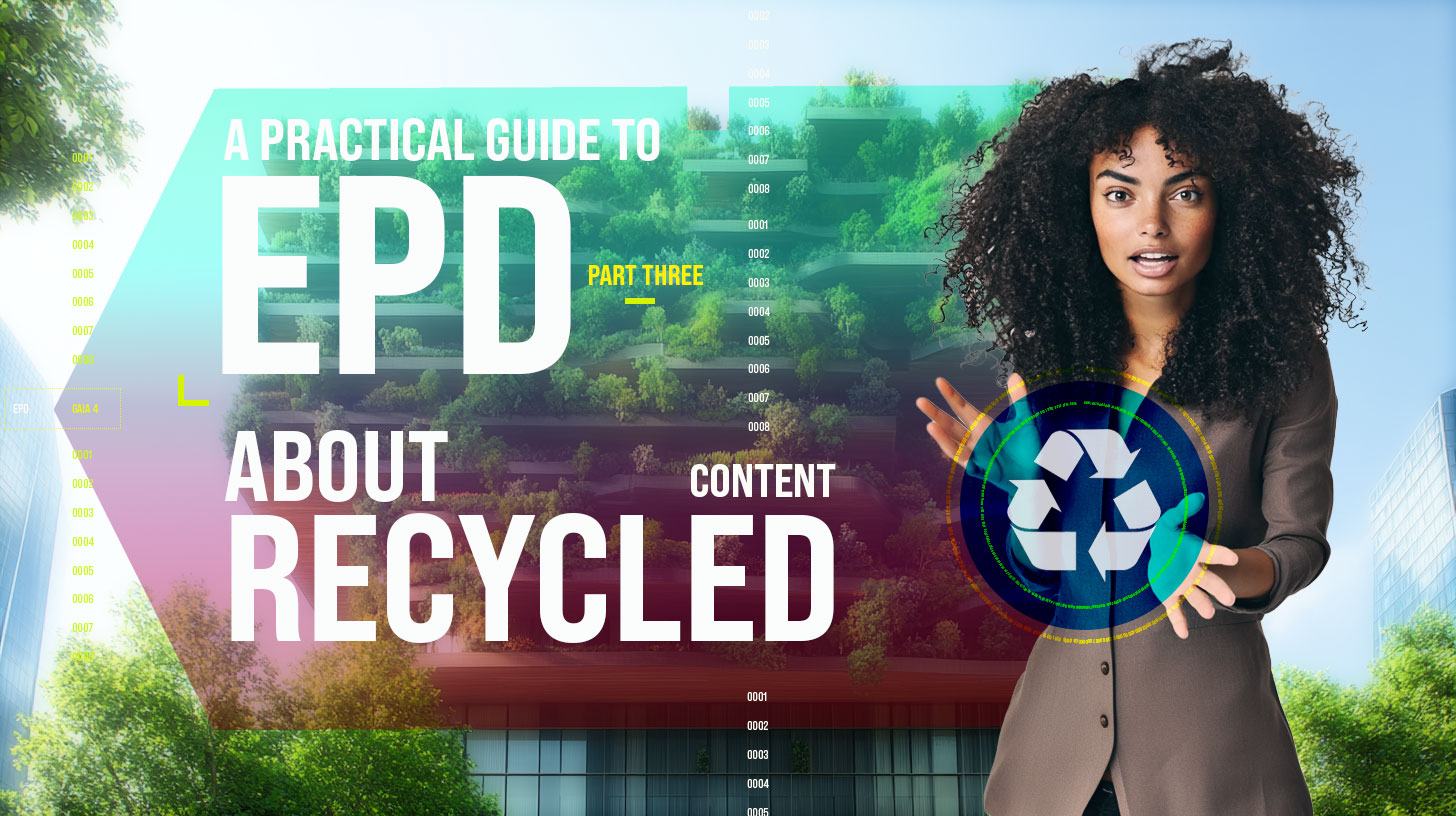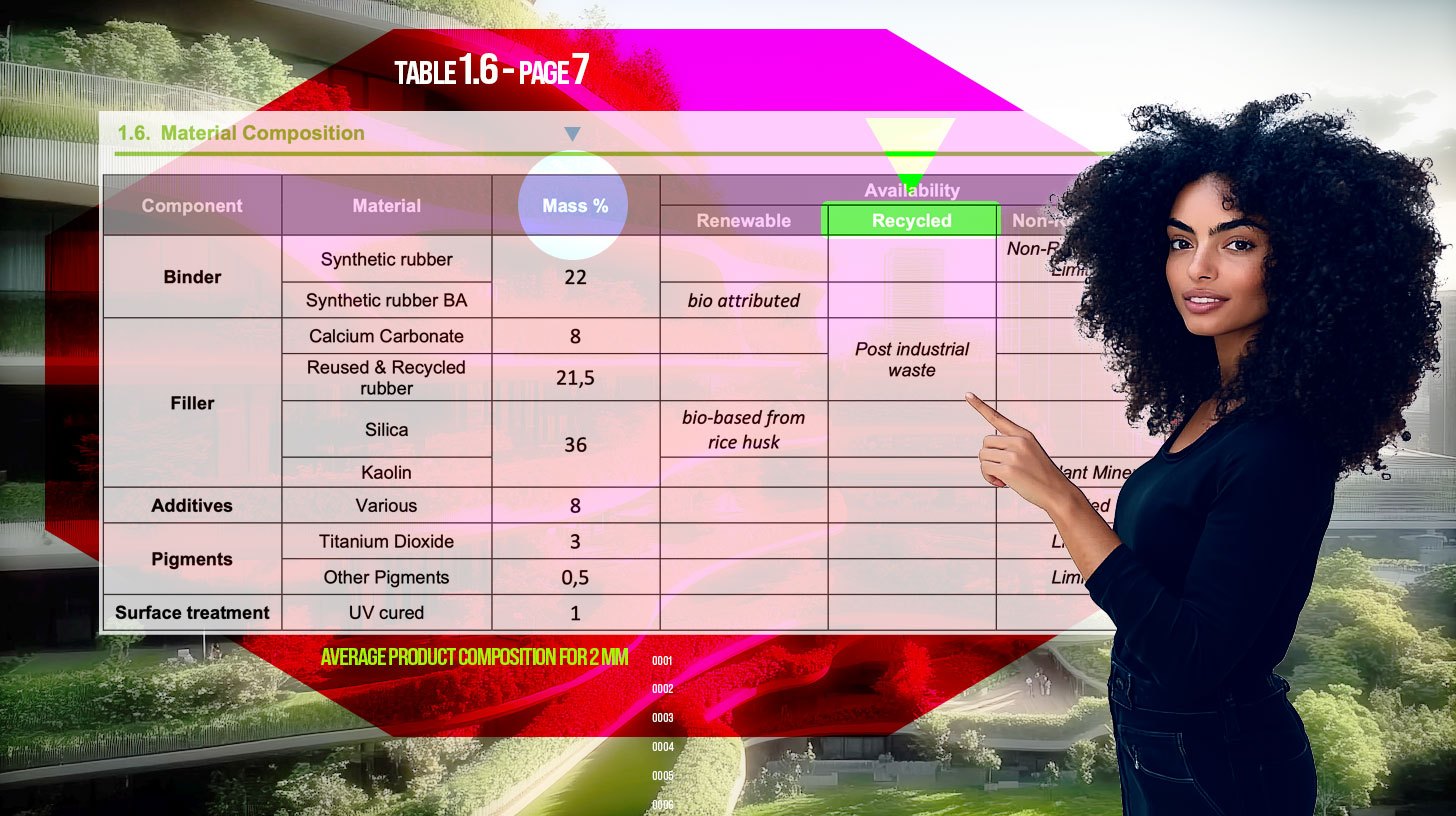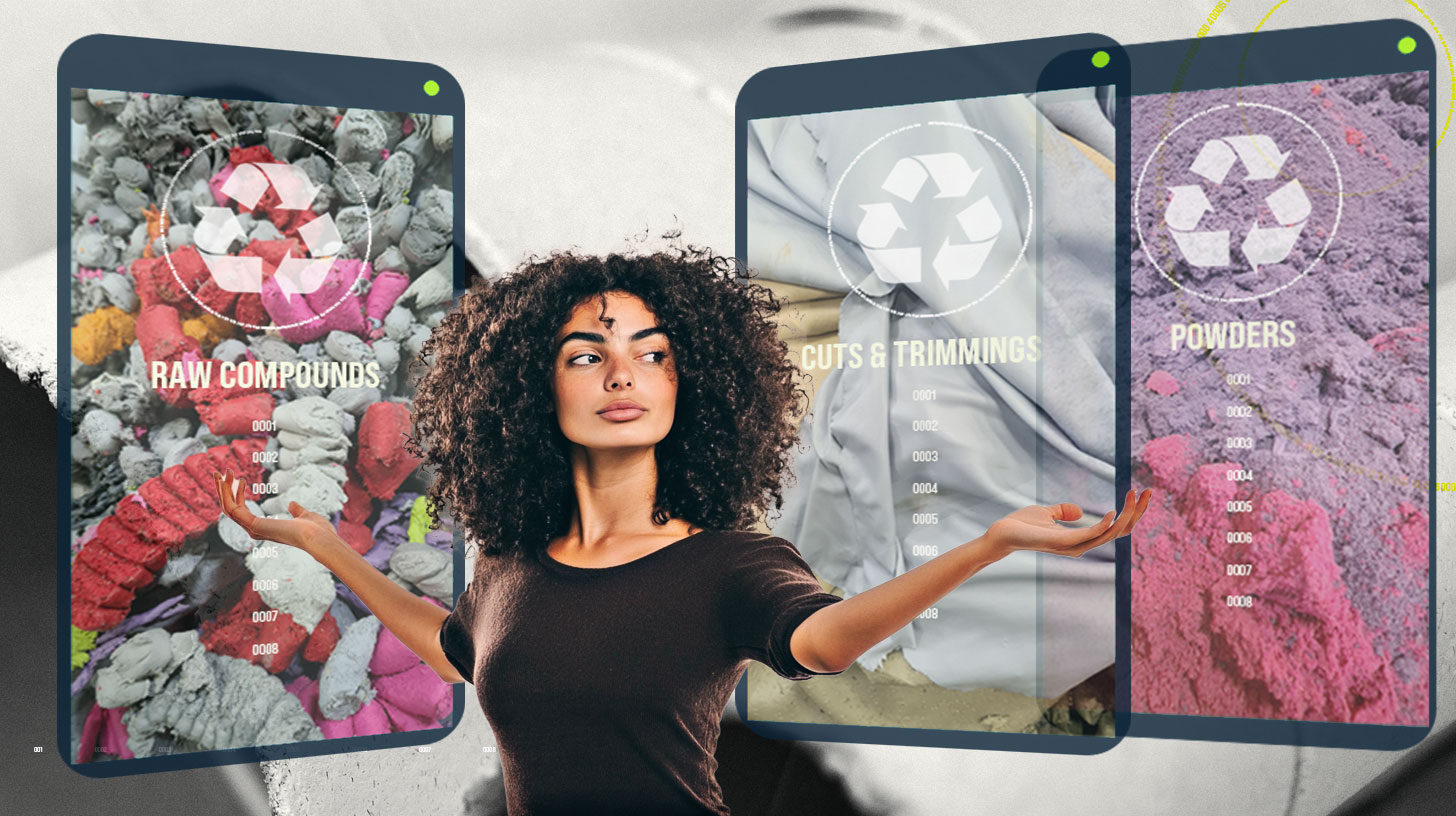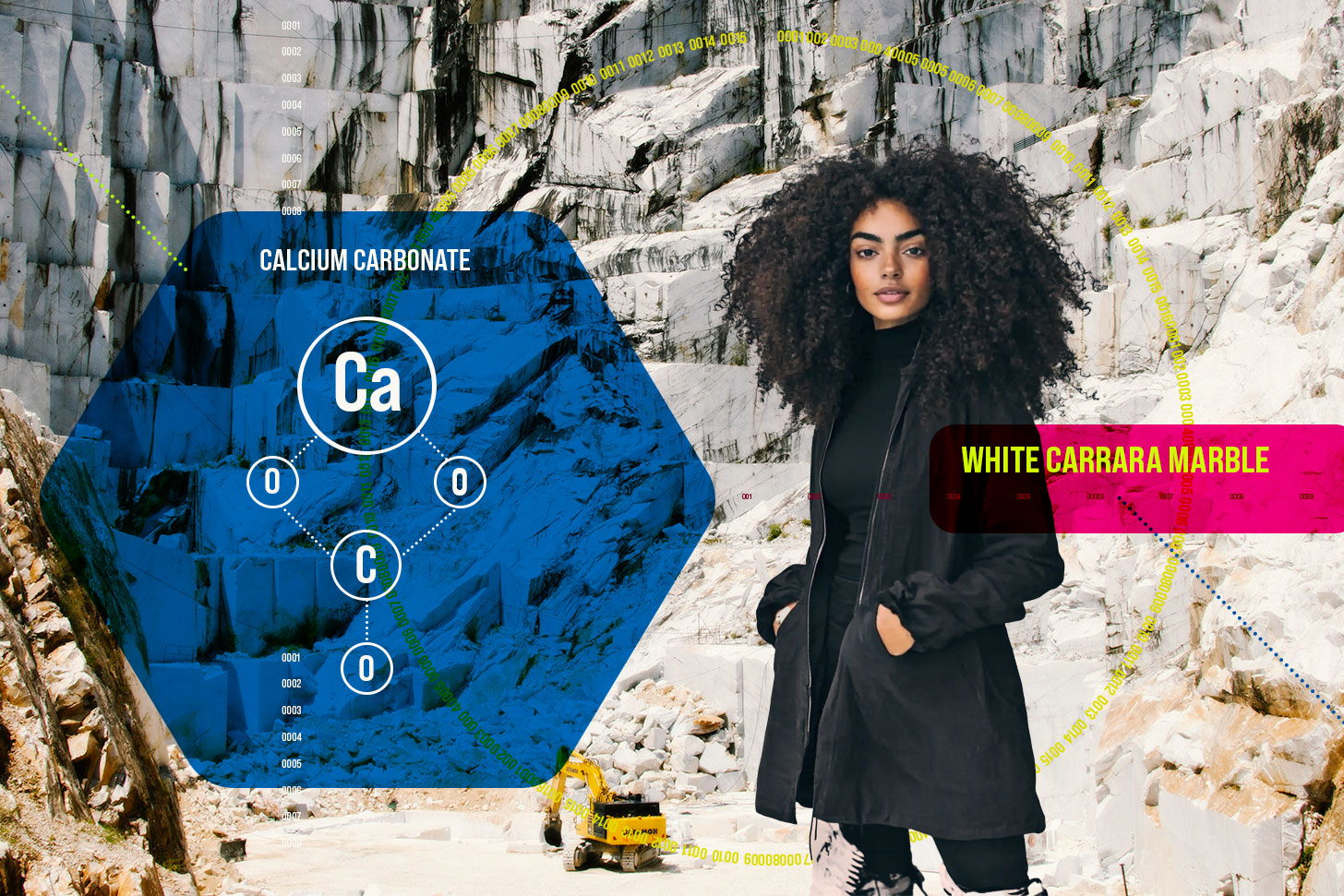
A PRACTICAL GUIDE TO EPD
PART THREE: ABOUT RECYCLED CONTENT
When it comes to eco-design, the use of descriptors like “renewable” and “recycled” without any scientific evidence to support such claims is considered greenwashing.
Here too, the EPD is a valuable ally to distinguish a true eco-sustainable commitment from generic and superficial claims.
In fact, a third-party verified EPD clearly indicates the presence of recycled or renewable content in a product without the possibility of “misrepresentation”.
Recycled content: where to find it and how to interpret it
This data indicates the amount of recycled materials used in the production of a product, a key parameter in assessing its overall environmental impact.
Where can I find it?
Generally, in the section dedicated to material composition:

How do you interpret values?
The values are expressed as a Mass %: the higher the percentage, the more sustainable the product.
By-products and the Circular Economy
Everything that is recovered and not sent to landfill represents value for the company and the environment. At Artigo, we have been doing this for years, but since last September we have also had certified evidence of this commitment.
In fact, we have installed weighing systems to precisely monitor the amount of waste and scrap that we reuse in our production process. This has allowed us to provide concrete evidence and obtain Bureau Veritas certification which attests to our commitment to the recovery of materials.
Our compounds have been progressively modified to integrate the reuse of grinding powders, raw and fired (vulcanized), derived from grinding or material trimming processes, as well as extrusion waste. The results of this innovation are significant: less waste, less consumption of raw materials and a reduced environmental impact.

But, we want to do more: our goal is to be able to use more and more recycled materials, i.e. materials that have already had a useful life and are recovered for the creation of new products. We are studying all possible ways to integrate this philosophy into our processes.
From waste to value: Carrara marble
In the meantime, we have taken another concrete step: using the waste of others. A few months ago, we replaced one of our ingredients with waste powders from white Carrara marble, a precious material that would normally have to be disposed of.
Marble, from a chemical point of view, is calcium carbonate (CaCO₃), an element already used as a filler in our substrate compounds. During the processing of marble slabs and artifacts, a powder is generated as a residue which, for us, is a precious resource: we can use it instead of having to extract a mineral.

Thanks to these innovations, we have made significant improvements in our sourcing of raw materials, representing an excellent starting point for the future. This not only allows us to reduce the GWP of our products, but it also gives new life to materials that would otherwise go to waste, promoting a circular economy model.
In the next article we will focus on Renewable Content!